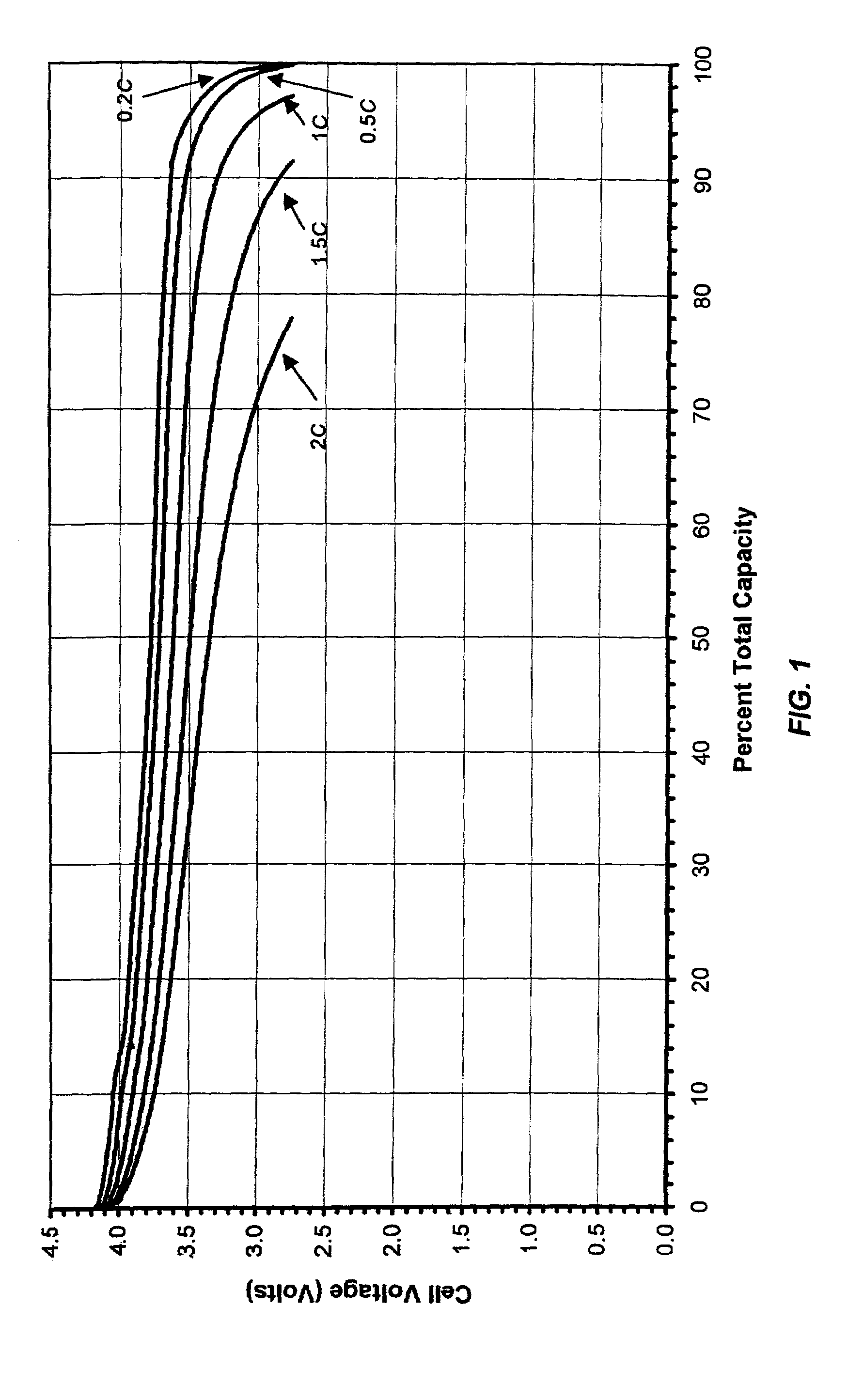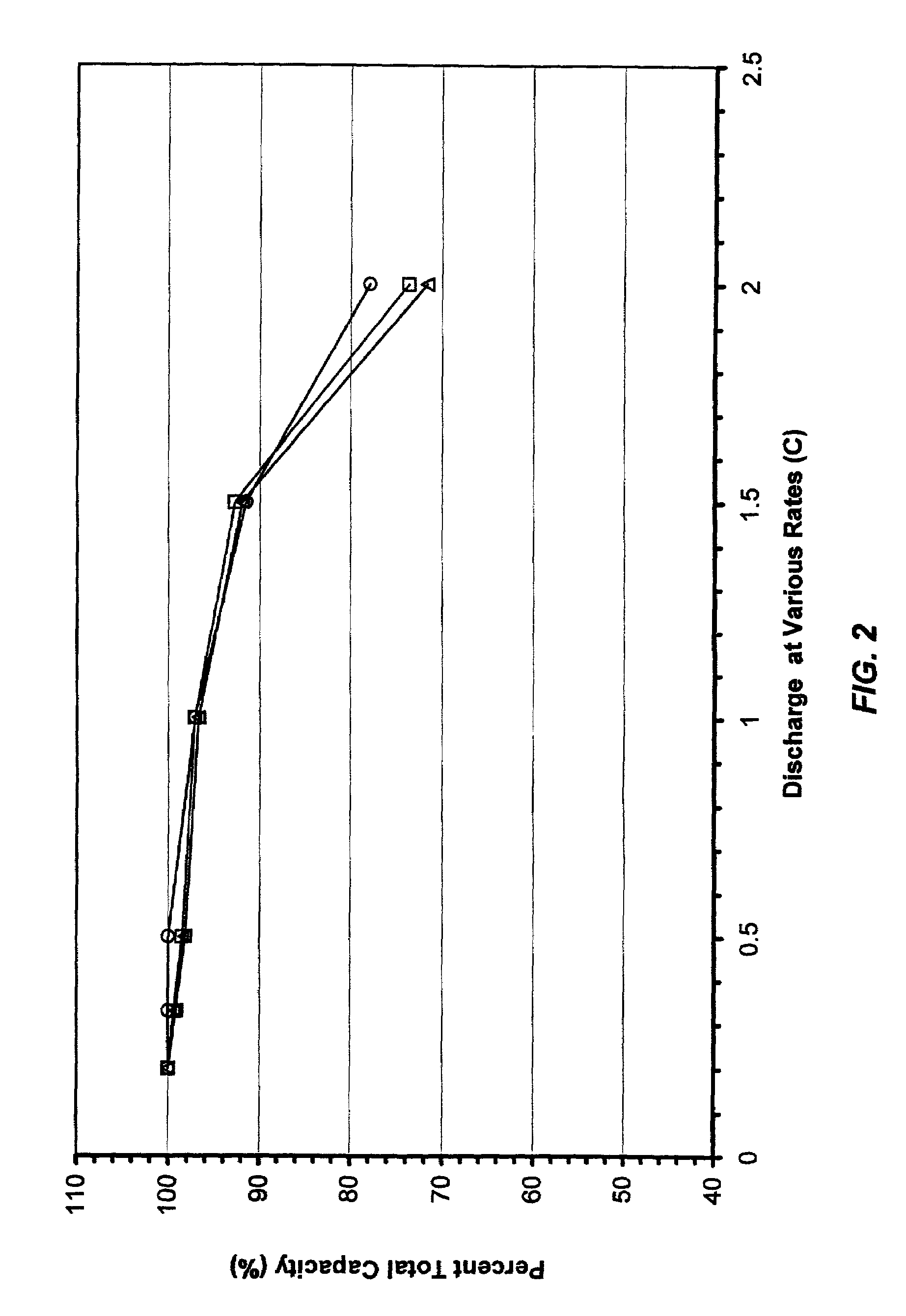Microporous membrane and its uses thereof
a microporous membrane and microporous membrane technology, applied in the field of microporous membrane, can solve the problems of affecting the the serious limitation of the distance between vehicles, and the long battery life of batteries with high energy density and long battery life, so as to achieve a more widespread use of electric vehicles, reduce surface resistance, and improve the effect of conductivity
- Summary
- Abstract
- Description
- Claims
- Application Information
AI Technical Summary
Benefits of technology
Problems solved by technology
Method used
Image
Examples
example 1
[0038]A microporous membrane was prepared as follows: 0.90 g of poly(ethylene-vinyl acetate) containing 50 wt. % of vinyl acetate, “PEVA-50”, 0.36 g of Escorez® 2596 (aromatic modified aliphatic hydrocarbon resin) made by ExxonMobil Chemical Co. of Houston, Tex., and 4.14 g of polysulfone (Mw. 80,000) made by Scientific Polymer Products Inc. of Ontario, N.Y., “PSU”, were dissolved in 40 g of tetrahydrofuran “THF”. To this solution, was added 1.00 g of fumed silica. The mixture was stirred overnight. Then, to this slurry, was added 7.00 g of lithium bromide, “LiBr”. After the LiBr was dissolved completely, the slurry was cast directly onto 4 inch by 15 inch pieces of Mylar® (polyethylene terephthalate) film substrate at room temperature. The coating thickness was controlled at about 200 μm. Ten pieces of membrane films were made with this slurry. THF evaporated from the membrane at room temperature in about half an hour. The resulting membrane was soaked in water for an hour as soon ...
example 2
[0039]This example is shown in Table 1, Sample No.2 and was made using the same slurry as described in Example 1 except with a substitution of Escorez® 5690 (cycloaliphatic hydrocarbon resins) made by ExxonMobil Chemical Co. of Houston, Tex., in place of for the Escorez® 2596 (aromatic modified aliphatic resins).
example 3
[0040]Sample No. 3 was made using the same slurry mixture as for Example 2 except with a substitution of poly(ethylene / vinyl acetate) containing 70 wt. % of vinyl acetate, “PEVA-70”, for PEVA-50.
PUM
| Property | Measurement | Unit |
|---|---|---|
| particle size | aaaaa | aaaaa |
| pressure | aaaaa | aaaaa |
| temperature | aaaaa | aaaaa |
Abstract
Description
Claims
Application Information
 Login to View More
Login to View More - R&D
- Intellectual Property
- Life Sciences
- Materials
- Tech Scout
- Unparalleled Data Quality
- Higher Quality Content
- 60% Fewer Hallucinations
Browse by: Latest US Patents, China's latest patents, Technical Efficacy Thesaurus, Application Domain, Technology Topic, Popular Technical Reports.
© 2025 PatSnap. All rights reserved.Legal|Privacy policy|Modern Slavery Act Transparency Statement|Sitemap|About US| Contact US: help@patsnap.com



